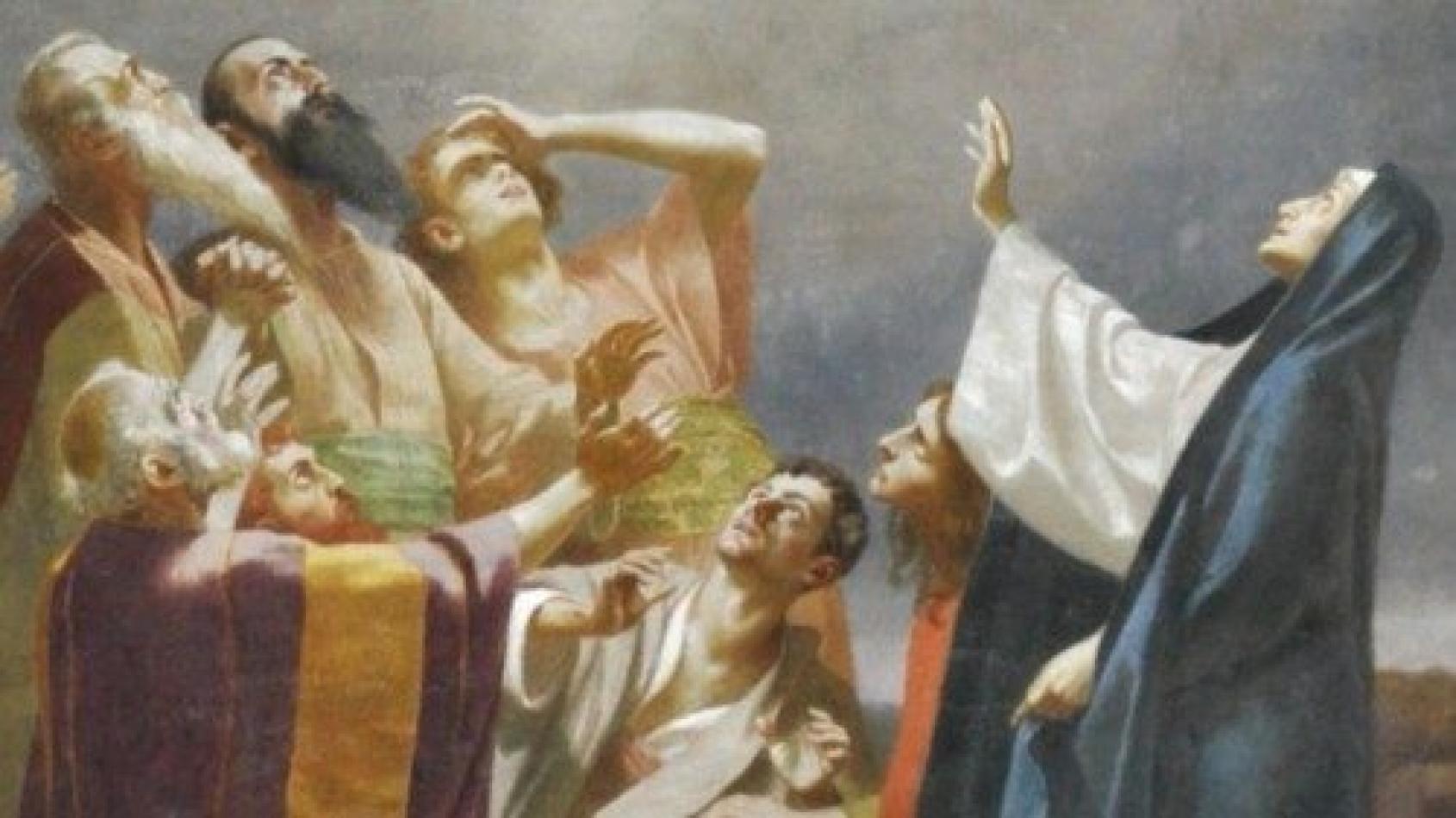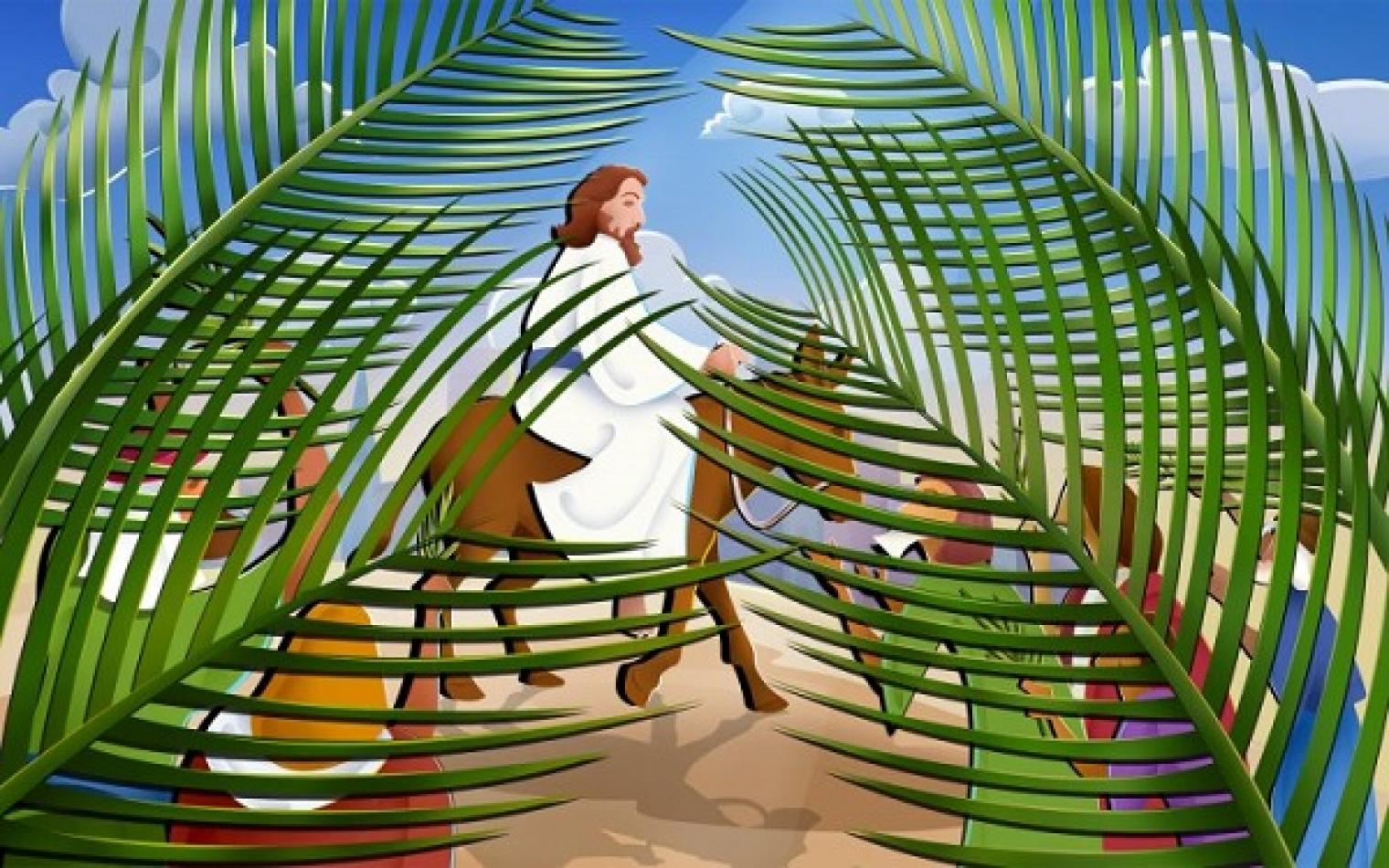Daniel Comboni
Comboni Missionaries
Institutional area
Other links
Newsletter
This time the liturgy “jumps” from the Gospel of John, which we have been readings in the last Sundays, to the last chapter of Mark. We actually read the five last verses, where it’s shown to us how Jesus passed the “mission baton” to the community of disciples, the Church that is now continuing His mission in the world.
Ascension: end or beginning?
Feast of farewell or feast of the missionary mandate?
“The Lord Jesus was taken up into heaven and sat at the right hand of God”
Mark 16:15-20
We are celebrating the “Paschal Mystery” which comprises five culminating moments of the Lord’s life: Passion, Death, Resurrection, Ascension and Pentecost (50 days after Easter). The Ascension concludes the symbolic period of forty days in which the Risen One manifests Himself to His disciples: “He had shown himself alive to them after his Passion by many demonstrations: for forty days he had continued to appear to them and tell them about the kingdom of God.” (Acts 1:1-11, first reading). The ‘forty days’ St Luke speaks of here do not represent a chronological time. In fact, in the conclusion of his gospel, he speaks only of the day of the Resurrection.
The gospel passage chosen for this feast is the conclusion of Mark’s gospel, called the “canonical ending” (Mark 16:9-20), which scholars believe was not written by the evangelist, but added by an anonymous redactor towards the end of the first century or beginning of the second. It is a summary of the accounts of the apparitions of the Risen One that we find in Matthew and Luke, because Mark’s gospel seemed to end in an abrupt manner, with the frightened women fleeing from the tomb (Mark 16:8). This addition, however, is considered by the Church to be an integral part of the gospel.
The Ascension, Feast of Mission
I would like to emphasise the missionary dimension of Ascension, which is not always sufficiently emphasised. We generally consider Pentecost as the “mission feast”, with the outpouring of the Spirit, the birth of the Church and the beginning of apostolic preaching. All this is true. However, we cannot overlook the fact that the ‘missionary mandate’ takes place on Ascension Day, at least in the synoptic gospels, Matthew, Mark and Luke.
Today, therefore, is the feast of the sending of the Church on mission! The Ascension is, at the same time, the point of arrival for Jesus, that is, the end of his ministry, and the point of departure for the Church, sent on mission. The three synoptics emphasise the close link between the Ascension and the sending forth on mission. The vertical movement of Jesus towards heaven corresponds to the horizontal movement of the apostles towards the world. Jesus concludes his mission on earth and makes himself “invisible” to give space, visibility and responsibility to the mission of his disciples on earth.
The septenary of Mission
The gospel passage offers us some (seven) indications on the mission:
1. The PURPOSE: to proclaim the Good New. “Proclaim the Good News to all creation”.The mission resumes as Jesus had begun it: “Jesus went into Galilee, proclaiming the Good News of God, and saying, The time is fulfilled, and the kingdom of God is at hand; repent, and believe in the gospel” (Mark 1:14-15).
2. The MODALITY: preaching. “They, going out, preached everywhere”, because “it pleased God to save believers by the foolishness of preaching” (1 Corinthians 1:21). It is foolishness for everyone, in fact, today as yesterday, because the object of preaching is “the Crucified One”. This is the last name of Jesus that we find in the gospel of Mark: “You seek Jesus of Nazareth, the crucified” (16:6). We may wear the crucifix in gold or silver around our necks, but we cannot ignore the fact that we worship a crucified man, “scandal to the Jews and foolishness to the Gentiles.” (1 Corinthians 1:23)!
3. THE MEANS: going, walking. “Go out to the whole world”, because the mission is done, first of all, with the feet! The first name of the Christian faith is “the Way” – this is how it is defined in the Acts of the Apostles – and one of the first names to designate Christians is “the followers of the Way” (Acts 9:2). If Jesus called himself ‘the Way’, each of his disciples is called to become a pathway that leads the lost to it. One of the depictions of the Ascension shows only Jesus’ feet under the cloud. Jesus leaves us his feet to continue walking the paths of humanity. This is why Pope Francis insists so much on the ‘outgoing Church’.
4. The RECIPIENTS, the PLACES and the PROTAGONISTS of the mission: everyone, everywhere, everybody. “Go out to the whole world; “They, going out, preached everywhere”. The mission has no borders and excludes no one. “They” are the protagonists, all his disciples, it means, each one of us! Today it is rightly emphasised that every believer is a mission: “I am a mission on this earth” (Evangelii Gaudium, 273). Moreover, it is not only a matter of reaching geographical boundaries, but also existential ones, such as society, politics, economics, culture, ecology, technology, media, the professional sphere…
5. Its CHARACTERISTIC: universality! The mission is addressed “to all creation”. It is the whole universe that must be evangelised, in view of the “new heavens and a new earth, in which righteousness dwells” (2 Peter 3:13; cf. also Revelation 21:1).
6. The NECESSITY and URGENCY of the mission! “He who believes and is baptised will be saved; he who does not believe will be condemned”. This statement has dramatic significance. The salvation of the world is at stake! Today, we tend to relativise it all too much, to the point of denying the necessity of the mission: “All religions are the same, anyway!”. Sacred respect for the conscience of the individual, the inalienable right to religious freedom, the due and enriching dialogue between all believers, do not exempt the Christian from this duty of evangelisation. St Paul embodies this preeminent necessity: “To proclaim the Gospel is not a boast for me, for it is a necessity imposed on me: woe to me if I do not proclaim the Gospel!” (1 Corinthians 9:16). Our baptism is the “consecration to the mission”, while many Christians have taken it on “for their own use”.
7. The SIGNS and FRUITS of the mission are four: casting out devils; speaking new languages; dealing with serpents and poisons; healing the sick. We note that these signs/fruits occur in those who accept the Gospel. We can ask ourselves where such signs are. Without denying a literal interpretation, for there has never been a lack of signs/miracles in the Church, I believe that such signs have a profound symbolic dimension valid for all times. Christ confers such powers on us: 1) the power to drive out the demons of war and hatred, injustice and selfishness that still enslave humanity; 2) the power to speak new languages, not those of Babel that led to the division of humanity, but those of Pentecost that unite us in the harmony of diversity; 3) the power to overcome the numerous traps and seductions of the Serpent and the poisons hidden in ‘worldly logic’; 4) and, above all, the power to bring consolation and hope to wounded humanity.
Finally, to conclude, we cannot forget that Ascension is linked to the expectation of the Lord’s return, on which looms one of the most disturbing questions of the Gospel: “But will the Son of Man, when he comes, find faith on earth?” (Luke 18:8).
Fr. Manuel João Pereira Correia mccj
Verona, May 2024
Ascension Day
Jesus passes the mission “baton” to us
A commentary on Mk 16, 15-20
This time the liturgy “jumps” from the Gospel of John, which we have been readings in the last Sundays, to the last chapter of Mark. We actually read the five last verses, where it’s shown to us how Jesus passed the “mission baton” to the community of disciples, the Church that is now continuing His mission in the world. Let us see briefly each of these five verses:
1. “Go into the world and preach the gospel to the whole creation”
It cannot said more clearly. Jesus’ friends and disciples understood quite soon three things: a) that the experience of friendship and discipleship they had with Jesus was a kind of a “precious pearl”, that it was the most important thing that ever had happened in their lives; b) that in spite of His death – or rather in and through His death- Jesus was not a looser but a winner –not by way of arrogance but way of love- and that He is now living with the Father – and, consequently, continuously present in each and every historical time-; c) that this marvellous news could not remain hidden, but it should be spread to all the corners of the Earth. To proclaim this “Good News”, this “gospel”, is a mandate, not to impose on others an ideology or a set of rites, but to share with all the enormous gift received.
2. “He who believes and is baptized will be saved”
The disciples understand that the mercy of God has been revealed to them and to all the human beings in the person of Jesus Christ. To receive that mercy, they do not have to be “the best ones”; they only have to believe, that is, not to close themselves up in their own arrogance and hypocrisy, but to open themselves and accept the free Love that is offered to them. The Baptism is the meaningful sign of that “conversion”, of that acknowledgement of our sins and of our purification an liberation by the powerful love of the One, “who did not count equality with God a thing to be grasped, but emptied himself, being born in the likeness of men”.
3. “They will lay their hands on the sick, and they will recover”
Sometimes, it seems that doing mission consists in preaching. And, certainly, words are quite important; they allow us to illuminate our way, to enter into relationships with others and with God… But the Christian Message is much more than just words. It us action, education, health, freedom… It acts in the concrete lives of people. It’s interesting to note how from the beginning Mission has gone together with solidarity (hospitals, schools, homes for elderly and children…). This actions are not means to gain the sympathy of people; they are “messianic signs”, actions similar to those Jesus used to do in Galilee, concrete actions that show the concrete love and care of the Father for each person in need and distress. For the western world, quite often, healing is reduced to “physical healing”, but the healing the disciples experience is much more: it goes to the deepest root of the person, with evident positive effects in all its dimensions: physical, psychological, social and others. There’s no doubt, The Gospel, when it’s announced and received in sincerity, carries in itself a powerful healing and liberating force.
4. “He was taken into the heaven and sat down at the right hand of God”
Certainly, the words used in this sentence –taken into heaven, Sat down, right hand- are part of a symbolic language that tries to transmit an important truth with various dimensions, one of which can be expressed in the following terms: Jesus, being now “in heaven” (beyond the Earth), has overcome the limitations proper to a Galilean born in the first Century; now He is sharing the same age and condition than all of us, from every culture and human condition. In his new condition, Jesus cannot longer be manipulated (“Do not touch me”, He said to the Magdalene), but He is near to each one in whatever condition we are: man or woman, black or white, more or less sinner, left -wing or right-wing… We all can be in communion with the One who is now “sitting at the right hand of God”, in every historical epoch and in every human condition.
5. “They went forth and preached everywhere, while the worked with them”
The disciples did not remain passive in Jerusalem, lost in a nostalgic attachment to the past. They took responsibility for the Gospel in the world and put themselves on the way, sure that the Lord was with them, even if in a different manner. This is the Church, the community of disciples that takes upon itself the responsibility to share the gospel to the last corner of the Earth. Each one of us is a part of this Church and has a part in its mission. The mission that Jesus entrusted to us for the life of millions.
Fr. Antonio Villarino
Bogotá




